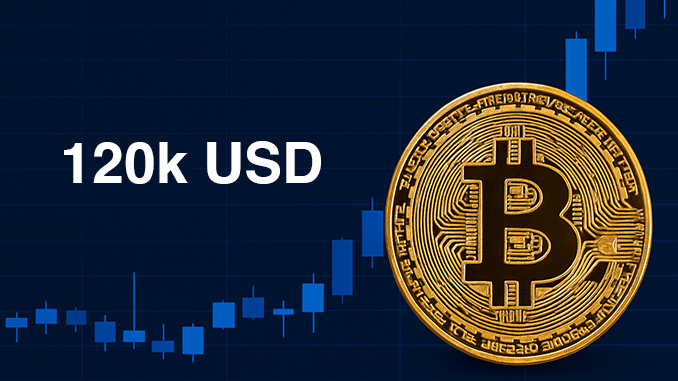
Bitcoin on the way to 200,000 US dollars – why 120,000 could now be underestimated
Bitcoin has increased in price by a good 30 percent in October so far and is successfully sailing upwards with the world’s largest financial stocks. The magic limit of 35,000 US dollars was broken. Crypto analyst Will Wu explains why and dares to look much higher.
The crash in digital assets earlier this year due to the FTX bankruptcy and shortly before that due to the bankruptcy of the US bank Silicon Valley seem like scenes from the distant past. The Bitcoin (BTC) Flash crashed again briefly in mid-October during a temporary “purge,” but the cryptocurrency has since increased in price again and is currently trading around the 35,000 US dollar mark. Will Wu, a popular and widely respected crypto analyst, has no doubts that Bitcoin currently has the potential to rise to 48,000 US dollars by the end of the year – and he forecasts a price for BTC of up to 200,000 US dollars by mid-2025.
Why Bitcoin is bullish – BTC in the adoption phase
Wu bases his optimistic forecast for BTC on three factors:
First, the global acceptance of Bitcoin and digital assets is rapidly increasing. According to a recent study by the Bank for International Settlements (BIS), between 2015 and mid-2022, owners of cryptocurrencies increased by a factor of five worldwide. This dynamic, the motivation for investment in new opportunities and the prospect of returns continue undiminished. In the course of this, Bitcoin is becoming an investment option of choice due to its characteristics as the oldest and most established cryptocurrency.
Secondly, Bitcoin is experiencing a shift in its own investor class: The share of what the specialist language calls “HODLers” – long-term investors who buy and hold BTC regardless of price volatility – has doubled since the beginning of 2019. This trend also shows: More and more Bitcoin optimists avoid speculating and are instead betting on long-term capital preservation.
Thirdly, Bitcoin and the broader crypto market is seeing volatility decrease, slowly transforming into maturity. This is due to stablecoins – they become more widespread for simple handling of digital assets and as a cash substitute. These developments have led to significant untapped potential being opened up by institutions, at least in theory.
Altcoins remain a speculative risk factor
Interestingly, Bitcoin’s outperformance opens up a parallel market that might be more than a sideshow for insiders: Altcoins, which many Bitcoin fans consider to be less robust and potentially speculative, could come under additional pressure. Even Wu himself describes Altcoins as speculative assets whose total value could tend to decline as Bitcoin at least temporarily becomes the linchpin of all decentralized stock exchanges.
If Bitcoin is truly on the verge of realizing its potential through a mature and stabilized market environment, the altcoin market could hardly place it. Large and well-known Altcoins such as Ethereum (ETH) or Binance Coin (BNB) are highly correlated with Bitcoin, but others show strong decoupling due to their individual projects and market capitalizations, which leads to a natural reorientation in the crypto sector.
Conclusion: New optimism in the crypto market driven by multiple factors
Whether Bitcoin will actually reach 200,000 US dollars depends on many factors that must be dealt in a complex manner. However, as long as Bitcoin constantly reconciles volatility, institutional interest, and expanding general acceptance, the signs remain positive. The first upward trend is evidenced by Bitcoin, as it has approached an annual high. With broad interest in Bitcoin being continuously driven by decentralized finance (DeFi) and a heat map outlining new potential investors in emerging markets, BTC is facing new highs and is retaining the image of the most secure “virtual gold” it has achieved. Will Wu’s insights are thus laying the foundation for the thesis that even a price above 120,000 US dollars should now not only be underestimated but could actually become a reality.
Leave a Reply